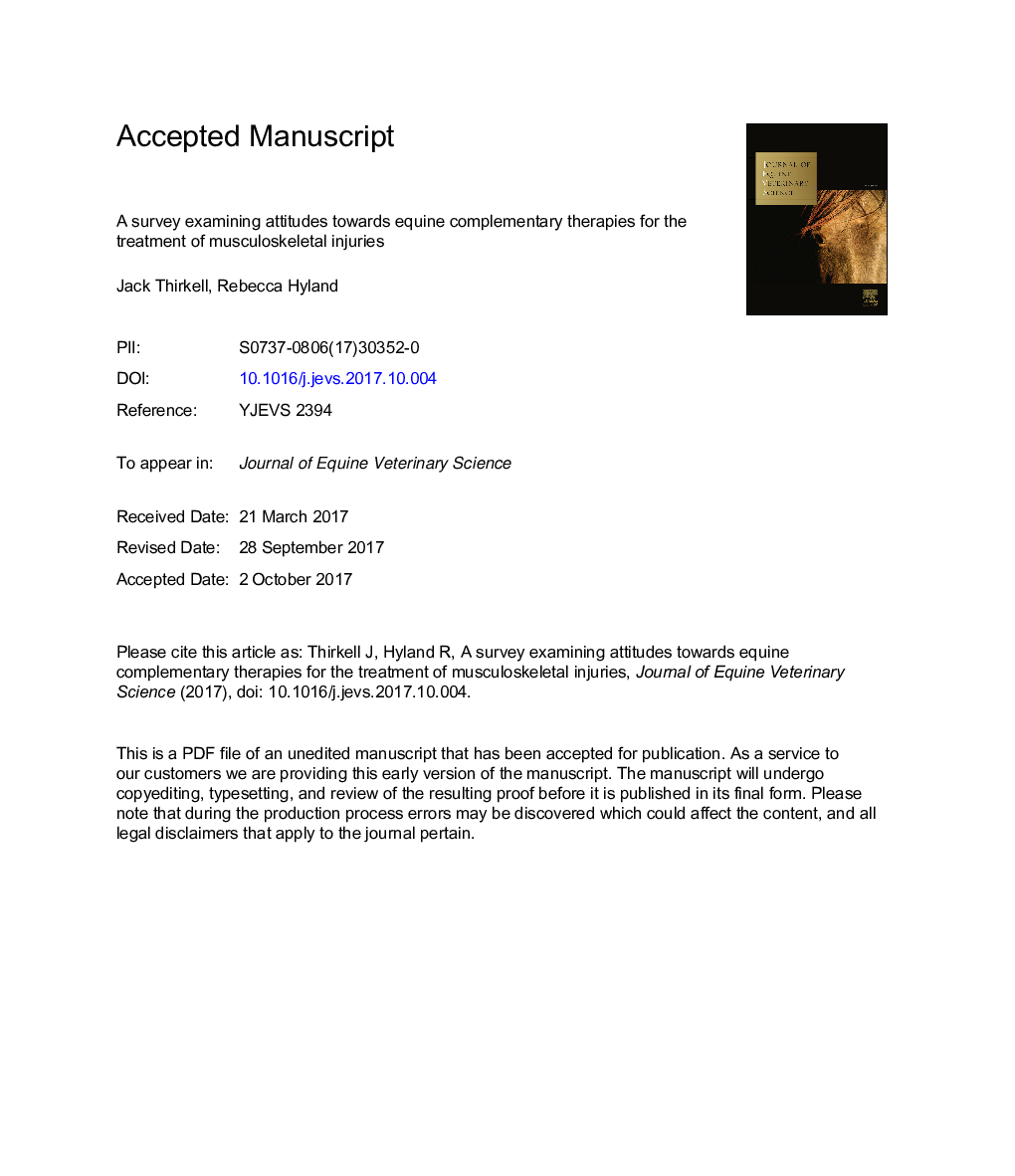| Article ID | Journal | Published Year | Pages | File Type |
|---|---|---|---|---|
| 8483337 | Journal of Equine Veterinary Science | 2017 | 29 Pages |
Abstract
Musculoskeletal disorders are the most common cause of wastage in equine athletes. There has recently been an increase in the popularity of complementary and alternative veterinary medicine (CAVM), as horse owners explore options to reduce recovery times and decrease the risk of re-injury. There is however a lack of scientific investigation into the efficacy or extent of CAVM use within the equine industry. An online questionnaire was developed to examine horse owner perceptions and use of CAVM and to explore the client-veterinarian relationship. Of the 423 respondents, 96% had used a form of CAVM on their horse, the most popular of which were massage (71%), chiropractic manipulation (59%) and magnetic therapy (54%). The growth in popularity of CAVM has likely resulted from encouraging results of equivalent treatment therapies in human studies. However, these treatments are not without drawbacks. Massage and chiropractic manipulation suffer from a lack of enforced licensing of practitioners, whilst magnet therapy has not presented significant benefits in human or equine research. Of the respondents, 50% were 'very satisfied' with their veterinarian and 74% felt their veterinarian was receptive towards suggestions they made regarding treatment of their horse. Despite this, 81% would try new therapies without consulting their veterinarian; a decision that is unfounded given that the awareness and understanding of CAVM and training available to veterinarians has increased. The client-veterinarian relationship should be considered important to the future integration of CAVM into conventional veterinary medicine and qualitative research is recommended to provide a better understanding of this relationship.
Keywords
Related Topics
Life Sciences
Agricultural and Biological Sciences
Animal Science and Zoology
Authors
Jack Thirkell, Rebecca Hyland,
